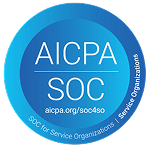FAQs
 How can Indian students approach relatives in the U.S. about cosigning a student loan?
How can Indian students approach relatives in the U.S. about cosigning a student loan?
When approaching U.S.-based relatives about cosigning, Indian students should first research and prepare a detailed presentation about the specific loan terms, including interest rates, repayment schedules and total cost calculations in both dollars and rupees. Schedule a formal conversation rather than making an impromptu request, and clearly explain your academic plans, career goals, and how your degree will translate to employment opportunities. Prepare a comprehensive postgraduation financial plan showing how you’ll manage loan repayments through on-campus jobs, optional practical training (OPT) employment, and potential H-1B sponsorship. Offering additional security measures, such as having your parents in India sign a legally binding document promising to reimburse the cosigner if necessary, can also help ease concerns.
 What alternative financing options exist for Indian students who cannot secure a cosigner for a U.S. education?
What alternative financing options exist for Indian students who cannot secure a cosigner for a U.S. education?
Indian students without access to a U.S. cosigner have several alternatives beyond traditional loans. MPOWER specializes in no-cosigner loans for international students based on future earning potential rather than current credit history. Additionally, many Indian students combine multiple funding sources, including merit scholarships from U.S. universities, graduate assistantships, which provide tuition waivers and stipends, education bonds from Indian financial institutions, and the Graduate Guaranteed Assistantship Program (GGAP) available at select U.S. universities for Indian students in STEM fields.
 How does having a cosigned U.S. loan impact an Indian student’s financial future when returning to India?
How does having a cosigned U.S. loan impact an Indian student’s financial future when returning to India?
When Indian students with cosigned U.S. loans return to India, they should be aware of a few financial considerations. For instance, repaying a loan in U.S. dollars while earning in Indian rupees may result in higher overall repayment costs if exchange rates fluctuate unfavorably. Additionally, some international payment methods may include transfer fees of around 2–3%, though students can explore cost-effective transfer options to reduce these charges. While U.S. credit history doesn’t directly carry over to India’s credit system, certain premium banking relationships may help students leverage their international financial record. To make the most of potential savings, students are encouraged to consult a tax professional about claiming deductions on education loan interest under Section 80E of India’s Income Tax Act.
 What are the specific advantages of MPOWER’s no-cosigner loans for Indian engineering and technology students?
What are the specific advantages of MPOWER’s no-cosigner loans for Indian engineering and technology students?
MPOWER’s no-cosigner loans offer particular advantages for Indian engineering and technology students through their career path underwriting model that recognizes the strong earning potential of these degrees. Indian students in STEM fields qualify for a three-year optional practical training period in the U.S. after graduation, providing extended income opportunity in dollars to repay loans. Additionally, MPOWER provides career support services, including job placement assistance and interview preparation specifically tailored for international students navigating the U.S. job market, plus networking opportunities with successful Indian professionals in the U.S. technology sector.
